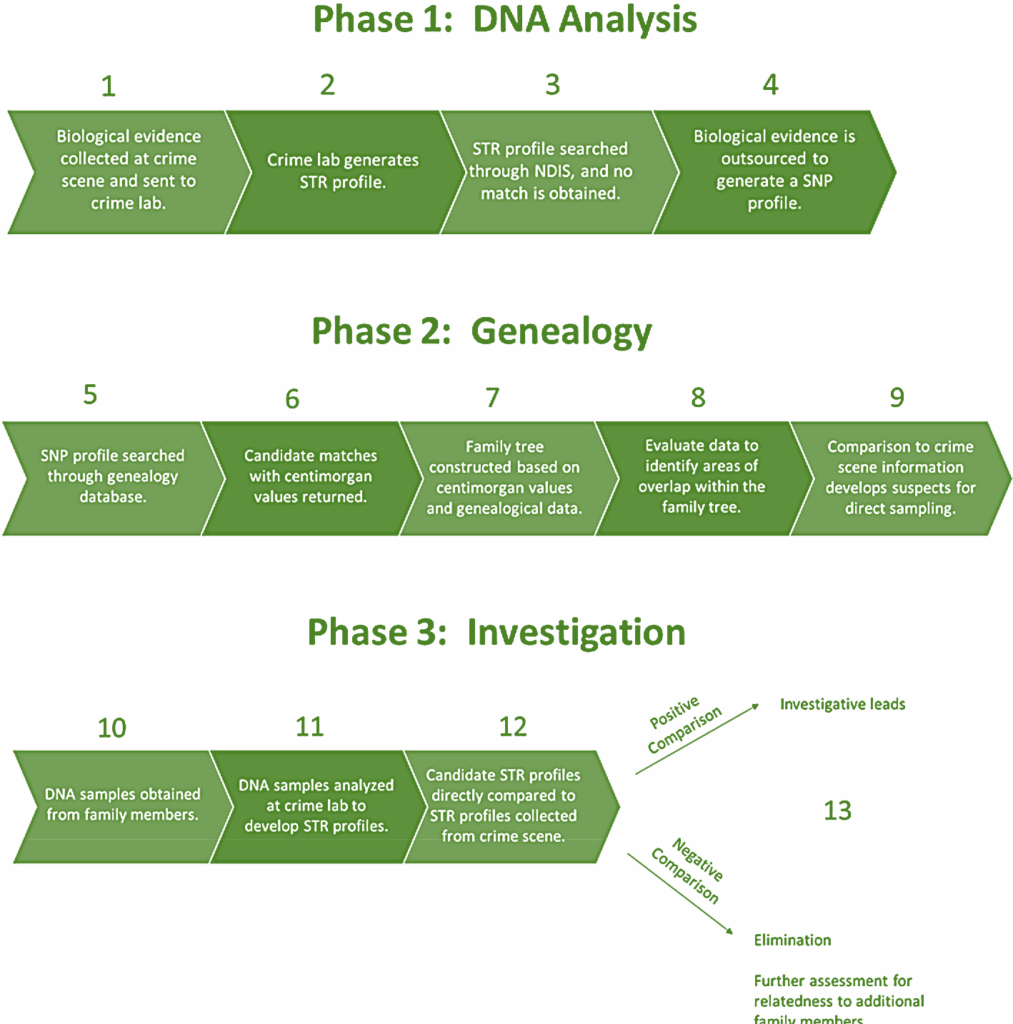Forensic has been at its developing stage in which we get to learn about new findings and facts every day. With the latest techniques used in its directive, new tools are being introduced to find the culprit and provide justice becoming a blooming topic for researchers to research.
Fingerprints, footprints, semen, saliva, and blood are some of the crucial pieces of evidence often found at crime scenes. Now let’s assume you found a blood sample at the crime scene and you extracted DNA from it but how will you proceed if you don’t have a suspect to compare that DNA with? So here in such cases, forensic genealogy comes to our rescue. ‘Forensic Genealogy’ is an emerging field of forensics that you might have heard somewhere and if not then you’re going to learn about a very important area of forensics through which numerous unsolved cold cases have been solved. The term “genealogy” comes from the Greek words, genealogy is the study of families and the investigation of their history and ancestry. The genetic data is used by forensic genealogists to link people to DNA samples.

A fundamental tenet of genetics is that people who are closely related will share DNA from their common ancestors and that the more apart from each other they are, the less DNA they will share. Although even half-sibling relationships can be challenging to resolve with limited STR data, familial searching of national DNA databases using 16–22 autosomal STRs will only provide links through partial matches to immediate relatives such as siblings, parent–offspring relationships where 50% of DNA is shared, or, at most, avuncular relationships where 25% of DNA is shared. Using public records and conventional sleuthing, law enforcement can utilize this skill to start creating a family tree of a suspect and victim. Former police officer Joseph James DeAngelo was the first person convicted using forensic genealogy. He terrorized Californians from 1973 until 1986 as the Golden State Killer, committing 12 homicides, 50 rapes, and 120 burglaries. Investigators took the DNA of the Golden State Killer from a rape kit in 2018 and uploaded it to GEDMatch which is a genealogical database. They returned more than a dozen persons who shared the killer’s great-great-grandparents. The detectives started creating a big family tree with the help of a genealogist, which helped them focus their investigation on two potential culprits. The detectives had Joseph James DeAngelo as their top suspect after a second DNA test eliminated one of the two. The team of detectives and genealogists took a sample of DeAngelo’s DNA from his car door handle and another from a tissue he threw away. After doing more tests, they discovered that both samples matched DNA taken from the crime scenes of the Golden State Killer. After being detained on April 24, 2018, DeAngelo was ultimately given several consecutive life sentences without the possibility of release. Although forensic genealogy is the most effective tool that investigators have acquired in the 21st century, due process and privacy issues have been raised by its rapid proliferation and lack of regulation. Although technology has helped to solve cold cases, forensic genealogy has often implicated innocent persons being one of the biggest disadvantages of it.

The key use of this new investigative tool is as follows:
- Determination of criminals using DNA samples from crime scenes.
- Individualization in mass disasters or cadaveric remains.
- To determine the genetic relationship between parents and their children.
- To determine the family tree or ancestry of an individual.
To identify particular, still-living people who are of interest for a variety of reasons, forensic genealogy examines the evidence left by the deceased. Although there are many legitimate applications for this outdated approach to conventional research, it has drawn scrutiny when employed to solve cold cases.
